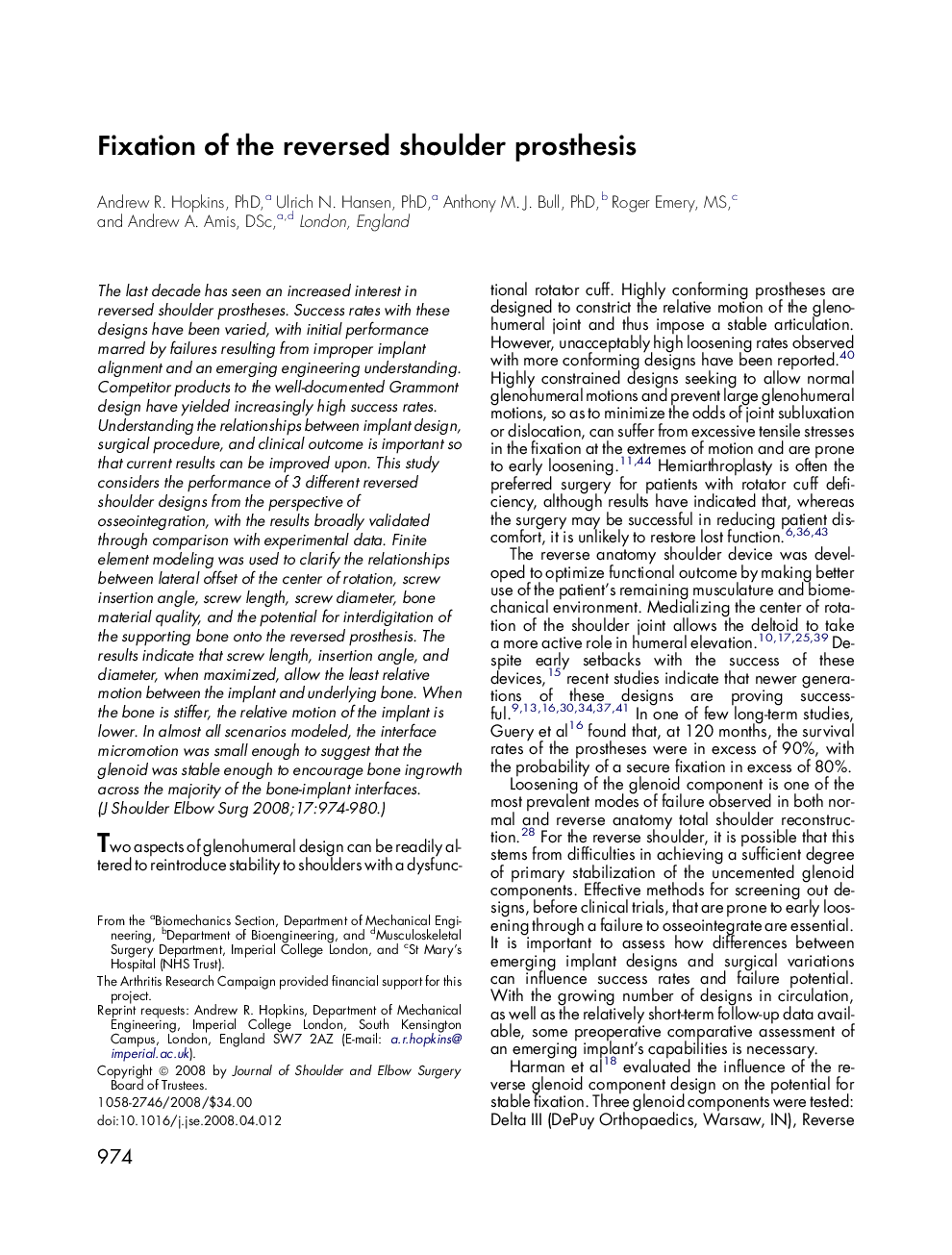| کد مقاله | کد نشریه | سال انتشار | مقاله انگلیسی | نسخه تمام متن |
|---|---|---|---|---|
| 4074744 | 1267019 | 2008 | 7 صفحه PDF | دانلود رایگان |

The last decade has seen an increased interest in reversed shoulder prostheses. Success rates with these designs have been varied, with initial performance marred by failures resulting from improper implant alignment and an emerging engineering understanding. Competitor products to the well-documented Grammont design have yielded increasingly high success rates. Understanding the relationships between implant design, surgical procedure, and clinical outcome is important so that current results can be improved upon. This study considers the performance of 3 different reversed shoulder designs from the perspective of osseointegration, with the results broadly validated through comparison with experimental data. Finite element modeling was used to clarify the relationships between lateral offset of the center of rotation, screw insertion angle, screw length, screw diameter, bone material quality, and the potential for interdigitation of the supporting bone onto the reversed prosthesis. The results indicate that screw length, insertion angle, and diameter, when maximized, allow the least relative motion between the implant and underlying bone. When the bone is stiffer, the relative motion of the implant is lower. In almost all scenarios modeled, the interface micromotion was small enough to suggest that the glenoid was stable enough to encourage bone ingrowth across the majority of the bone-implant interfaces.
Journal: Journal of Shoulder and Elbow Surgery - Volume 17, Issue 6, November–December 2008, Pages 974–980